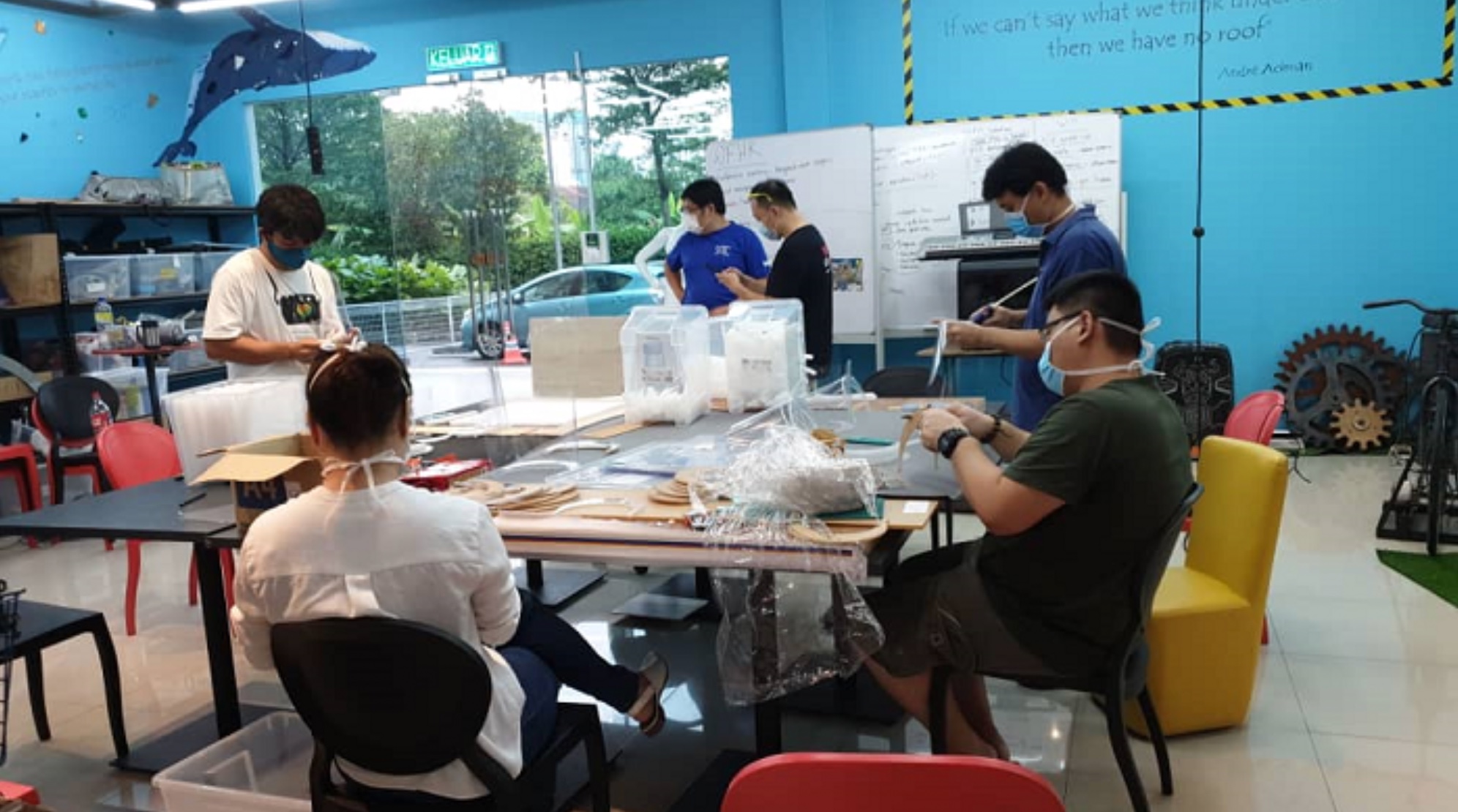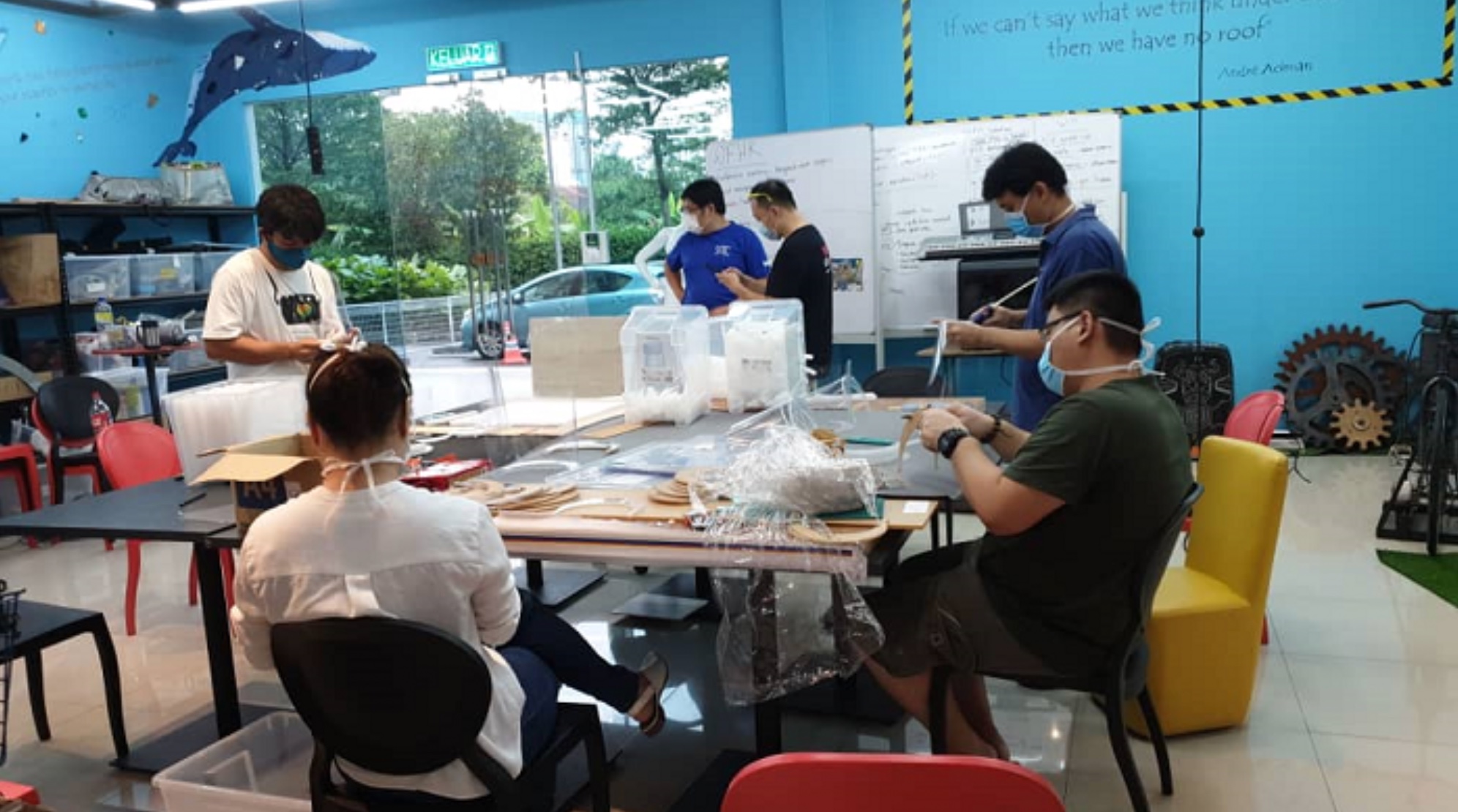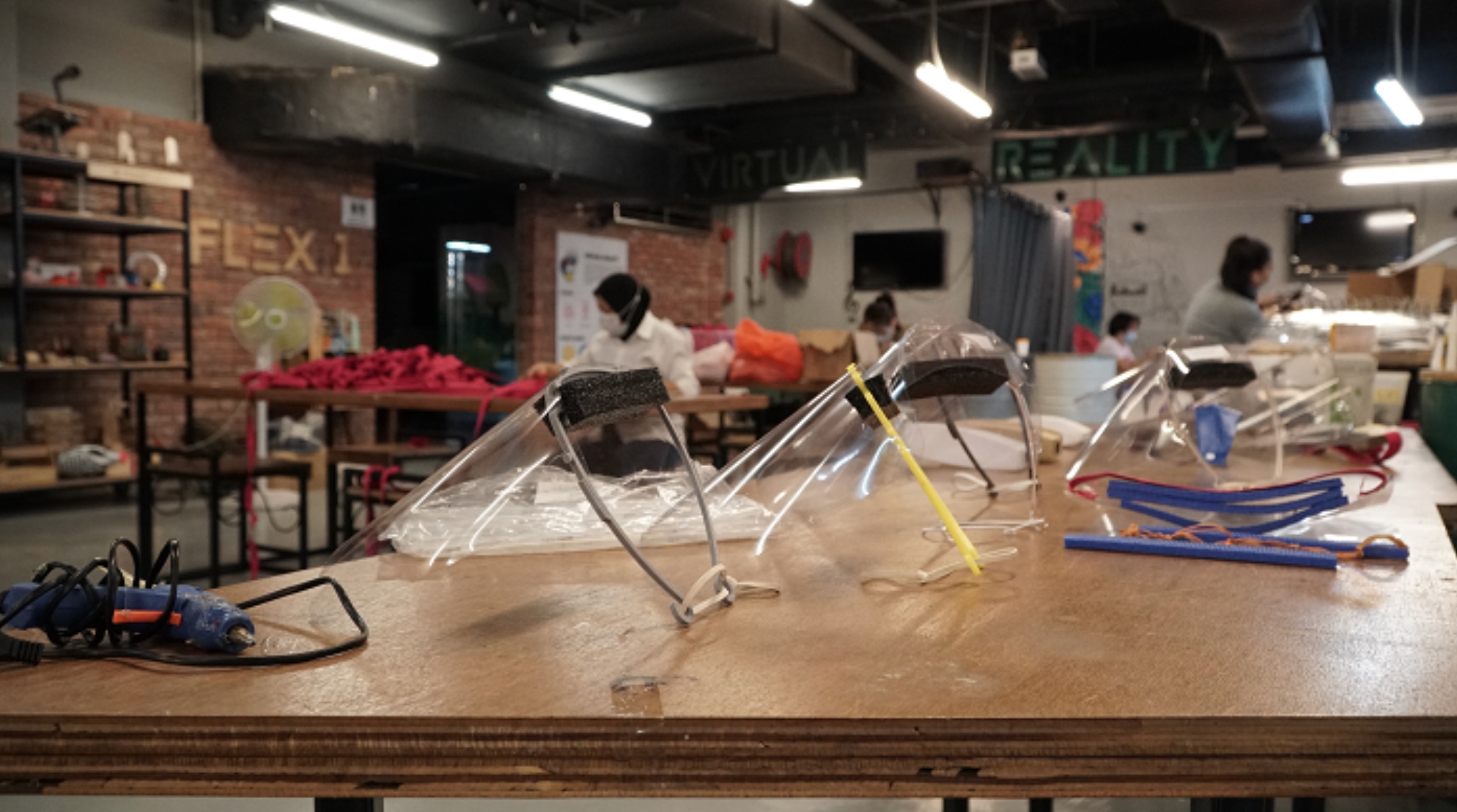In the educational field, the pandemic has led to the construction of new learning scenarios. In addition to the central role played by engineers, doctors, nurses and other essential professions, the role of teachers has been pivotal during the lockdown. The situation unleashed by the states of emergency led to sweeping changes and innovations in education. A number of projects and initiatives have emerged to alleviate the educational crisis affecting the world. And ICT has made it possible to tackle the crisis in both education and health. Covid-19 disrupted the supply chains of masks and other personal protection equipment. Amongst all the initiatives, it is worth highlighting those carried out by the maker community.
During the lockdown, due to the shortage of medical equipment, foundations like Maker Faire joined the manufacture of personal protection equipment (PPE), ventilators and other clinical devices, through 3D printing, sewing and other tools.
The Maker Faire Education Foundation was founded in 2006, following the launch of Make magazine a year earlier by its creator Dale Dougherty. Initially, it was a kind of trade fair that brought together all those interested in technology, mechanics, craftsmanship, sewing and manufacturing in general. This gave rise to a space in which to start experimenting, building and sharing with the rest of the community. As the project grew, its founder progressed in the development of educational proposals such as STEM (Science, Technology, Engineering and Maths) programmes in schools.
When we talk about the Maker Movement, we are referring to a trend that has been in existence for several years now. But the current situation has positioned it as a potentially essential player during the pandemic, affording maker communities an active role in supporting the efforts to overcome the crisis, through initiatives aimed at the digital manufacture of material. The maker community has always been connected through social networks, and during this crisis has focused mainly on producing healthcare supplies in an altruistic way.
From the educational perspective, maker approaches imply a way of understanding that learning is for life, one learns by doing and building, and they are the result of philosophical aspects associated with the “Do It Yourself” (DIY) movement. These approaches foster societies whose citizens are proactive and take the lead in solving problems; the solutions, although devised for themselves, can often be extrapolated to other situations. Learning-by-doing and collaborative learning are two of the factors that have enabled the following projects to provide decisive support at a historical juncture such as the Covid-19 pandemic.
In Spain, the community of maker volunteers launched the coronavirus makers initiative in March 2020. This is the largest export network of open-source and free technology. The main purpose was to produce emergency materials so badly needed during the pandemic. A total of 20 R&D projects have been set up to battle the virus, including producing ventilators, technological applications for product management, masks, protective glasses, surgical gowns, etc. All of this making use of tools such as 3D printers and other technologies. A similar initiative was also carried out in Mexico City. Students, teachers and experts all make up this community that managed to alleviate the shortage of personal protective equipment during the crisis.
In Italy, another country that was severely hit by the virus, an initiative was launched at Chiari Hospital in Brescia. The editor of a local newspaper, in association with FabLab’s founder, Massimo Temporello, and a network of companies using 3D technology, chose to contribute to the manufacture of valves for ventilators. The hospital was equipped with its own 3D printer and in just six hours they managed to produce the part for a ventilator, thus saving one more life.
The maker community in Latin America has also joined the drive to produce open source designs and share them globally. In the Zacatecas region of Mexico, Tecnológico de Monterrey managed to increase the number of 3D printers and laser cutters. And in just one month they managed to distribute a total of 150 sets of PPEs to the municipalities in that region.
In Canada, the initiative was developed at Perth and Smith Falls District Hospital in Ontario. They converted one patient’s ventilator into a nine-patient machine, selecting patients who were similar in lung capacity and size. In the USA, a doctor in Texas shared instructions for deploying a 3-metre 2200 Elite Allergen home air filter by placing it between two pieces of fabric to make a total of 60 masks.
Moving on to the African continent, the coronavirus arrived later but case numbers there have since risen sharply. In Kenya, in order to mitigate the effects of the pandemic, they have opted for an initiative to detect, isolate and manage cases. A group of young people developed an application to send automated messages to the population reminding them of the importance of washing their hands, wearing a mask and social distancing. This app also offers advice to those affected by Covid-19. The integration of young people with innovative ideas alongside frontline health workers has been essential to the implementation of pioneering initiatives such as these.
In Sudan, a doctor used social media to show how to make a ventilator using stethoscope tubes. He shared a video showing how to make a ventilator by removing the lower part and the earpieces from the stethoscope and connecting the lower tube to an oxygen source. The tube works as a Y adapter to provide patients with oxygen.
With regard to Asia, Malaysia, working together with Vietnam’s FabLab and Guam Makerspace, used a maker approach to help address needs and mobilise resources. Malaysia has implemented two notable initiatives: Me.reka and Biji-biji. These two platforms are aimed at providing a solution, in this case an eminently educational one, during the crisis unleashed by the virus. Me.reka is an innovative educational space offering tools and technology to create and develop the learning-by-doing concept. It uses highly collaborative teaching methods, enabling students and professionals to learn how to provide solutions to complex and global problems, by creating and innovating. It brings together students, experts, communities and manufacturers and connects them to build sustainable solutions, in this case responding to the needs arising during the pandemic. Meanwhile, the Biji-biji initiative, which is quite similar, also aims to provide innovative solutions to the problems facing society by encouraging creativity and making use of new technologies that are always driven by the community.
The maker community has shown that global problems are best addressed through decentralised production models. The community has managed to create, design and openly share its advances, innovations and resources, tackling a global problem with local solutions. Experts and technicians have been joined by companies, manufacturers and producers. The pandemic and ensuing global crisis have led to a paradigm shift. Digital communities with access to technologies, tools and talent have managed to innovate, creating the need to share resources and strengthen collaborative work. Informal education, the segment from which the maker movement originally emerged, is one of the learning approaches with the greatest impact, in terms of the possibilities of generating significant dynamics for learners. Problem solving is the basic strategy, and learners’ connection with their immediate environment is total. These two premises ensure memorable learning experiences and train citizens to engage with their societies.








